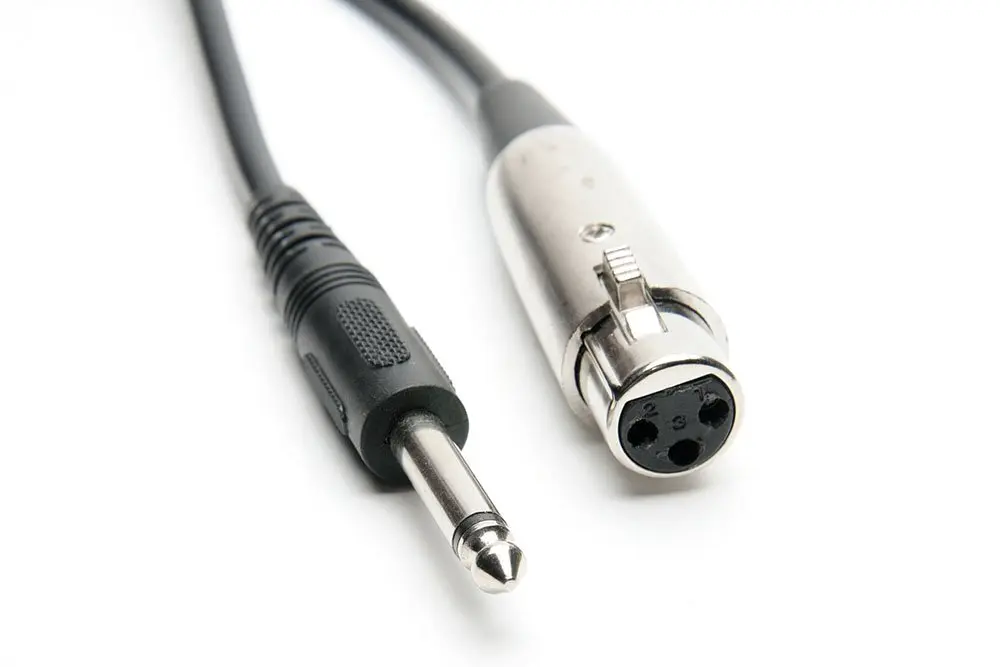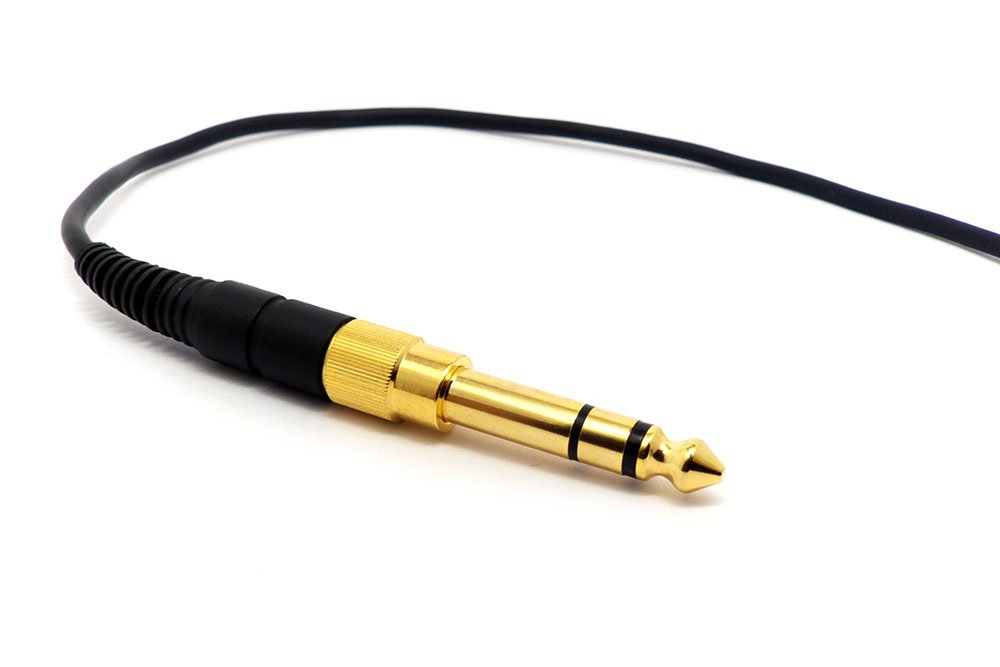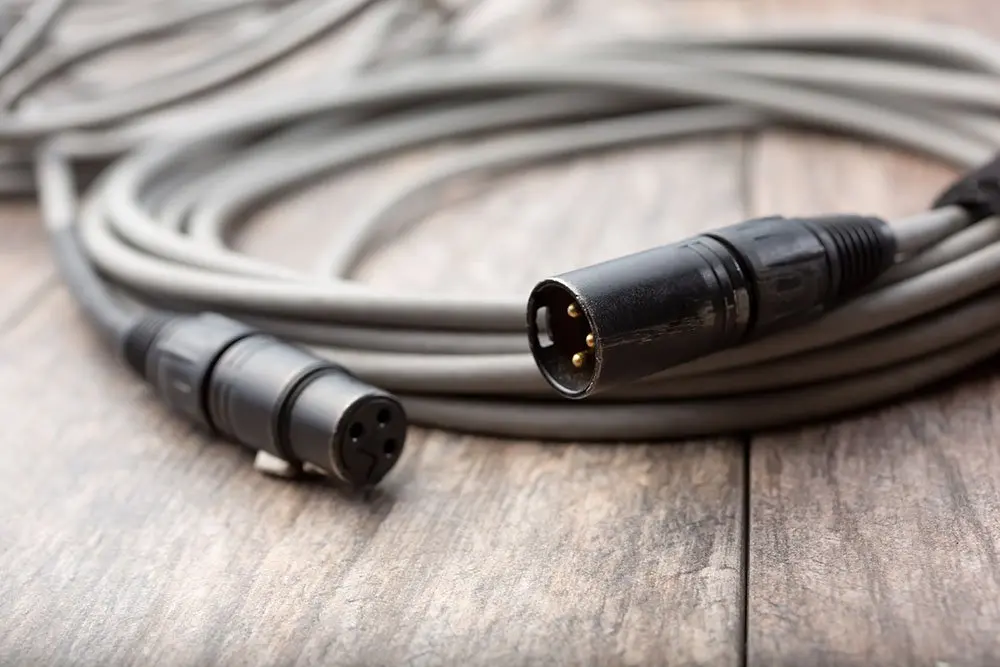When you’re setting up a home recording studio, it’s easy for a lot of your focus to go solely on the equipment you need: microphones, headphones, audio interfaces, pop filters, shock mounts. The list is seemingly endless!
But one thing that is often overlooked is the type of cable you need to connect all of your shiny new podcasting gear. This isn’t an easy task to undertake, either.
When looking at cables, you’ll face low impedance, high impedance, analog, and digital, to name just a few.

However, there are only two options you should consider when creating your studio. These are TRS and XLR.
Knowing this should narrow down your options a lot, but you’re still faced with determining which one is right for you.
So, to make things as straightforward and jargon-free as possible, we’ve decided to take a look at each of them. There’s a lot to learn about both, but we’ll try and keep things as simple as possible.
This should make the decision-making process a lot easier!
Table of Contents
Similarities
Before we start looking at their differences, let’s take a moment to look at what TRS and XLR cables have in common.
First of all, they both have the same purpose: to connect all of your recording devices so that you have a fully functioning studio.
Both XLR and TRS cable are analog cables, as opposed to digital cables too. This means that they use electricity to transmit information rather than relying on binary code.
Since analog cables can transmit this information in real-time, the quality of your recordings will be higher.
TRS and XLR cables are both balanced as well, and this means that they are unaffected by any sound interference coming from radio frequencies or electrical equipment.
This makes them the gold-standard for audio production and further ensures that your recordings are of the highest quality possible.
The final thing that both TRS and XLR cables have in common is that they have three contact points. This is what makes them balanced cables.
Each of these contact points is solely responsible for carrying a positive signal, a negative signal, and a ground signal.
It’s this that reduced the sound interference from other equipment in your studio being picked up on your recording.
What is TRS?
Now, let’s take a look at their differences. We’ll start with TRS, which is an acronym for “Tip, Ring, Sleeve.” This represents the three contact points that make TRS cables balanced.

It’s often referred to as a ¼-inch or ½-inch cable (depending on its size), and the fact that versions of TRS cables have been around since the early 1800s is a testament to its performance.
Purpose
The most common use of a TRS cable is for connecting balanced line-level equipment. A TRS is used for connecting a stereo device to another input or output.
An example of this would be connecting a microphone to an audio interface and then using another TRS cable to connect your audio interface to your computer.
Design
A TRS cable looks a lot like a headphone jack, but a bigger version. As its full name suggests, three essential components make up a TRS cable; the tip, the ring, and the sleeve.
Of all three, it’s the ring that is particularly important as this is what grounds the signal and helps create a higher level of audio quality.
Pros
One of the most significant advantages of using TRS cables is that, unlike XLR, they can connect to both inputs and outputs.
This means that it can connect to something that is receiving audio signals (such as a microphone) and a device that sends audio signals out (like a speaker or computer monitor).
Each end of a TRS cable has the same connector, so there’s no need to worry about pairing males and females together.
Cons
If there is one downside to using TRS cables, they don’t have the same physical strength as XLR cables. Since they are designed for frequent plugging and unplugging, they don’t fit tightly inside their ports.
So, while this means that they’re easier to remove when you need to, they can also be accidentally tugged out much easier too.
Another issue with TRS cables is that, although they are balanced, the wires are not separate as they are with an XLR cable.
This means that, although you’ll get a better signal since it’s grounded, it’s slightly weaker than the signal achieved by an XLR.
What is XLR?
Let’s take a look at XLR cables now. As with TRS cables, XLR is an acronym that stands for “External Line Return.”
Invented in the 1950s, its original purpose was to standardize the cables used in all audio equipment, including microphones, speakers, and amplifiers.

Different XLR cables have been created over the years, with some featuring as many as ten pins! However, it’s the 3-pin XLR cables we’ll focus on here since this is the variety you’ll be most likely to use in your studio.
Purpose
XLR cables work by passing large electrical currents between two-line level audio equipment. They are the most commonly used cables when connecting a microphone to an audio interface.
Your audio interface would then be connected to your computer (most likely with a TRS cable), and a high-quality piece of audio would be created.
But why not just use a TRS cable to connect your microphone to your audio interface? Without an XLR cable, the audio wouldn’t be loud enough, and, therefore, the audio quality would be of lesser quality.
Design
As we’ve mentioned previously, XLR cables are balanced. This is because they have three contact points.
However, unlike TRS cables, XLR cables come with either male or female ends. Male XLRs have three pins, and female XLRs have three holes. This makes connecting them to their counterparts fairly self-explanatory.
Pros
There are a few things that an XLR cable can offer you that a TRS cable cannot. The first of these is that they are fairly tug-resistant.
This is because the male-female connection makes a super-strong bond, so it’s much harder to accidentally unplug the cable when gesticulating or walking around with a wired microphone.
Many XLR cables come with an integrated lever that will only release them from their jack when pressure is applied to it.
This makes it virtually impossible to accidentally unplug, ensuring that your audio signal is kept strong at all times.
Another advantage of using XLR cables, and arguably the most important, is that the three-pronged design means it features a separate wire for grounding.
This means that you’ll get a much better audio signal than you would with a TRS cable.
Cons
The major drawback of XLR cables is that you have to make sure you’ve got the jack’s correct cable type.
Accidentally ordering a female XLR and trying to pair it with an audio interface with a female jack will render it useless. This isn’t something that you need to worry about with TRS cables.
Because of their strength, design, and durability, XLR cables tend to be a little more expensive than TRS cables as well.
This means that they’re not the best choice if you’re working with a limited budget or if you’d rather spend money on equipment than on cables.
With that being said, it is worth remembering that without cables, you won’t be able to use your recording equipment, so it’s not something to skimp on.
You can find audio equipment that includes XLR cables a lot of the time, so that’s worth looking out for if you’re trying to be money conscious.
TRS to XLR
If you can’t decide between the two, there is a third option! You could always go for TRS to XLR cables. As you might have guessed, one end of this cable has a TRS connector, and the other has an XLR connector.
This is an excellent choice if you have recording equipment with multiple jack options, which many modern audio interfaces and speakers do.
Conclusion
Although both TRS cables and XLR cables have the same purpose, there is a little difference between them. The choice you make will ultimately depend on the jacks that your recording equipment have and your personal preference.
If you want to keep an established connection at all times and make sure there’s no risk of anything getting accidentally unplugged, then we’d recommend going for XLR cables.
However, if you’d like to change your equipment between recording sessions, or want to take your show on the road at some point, then TRS cables could be the best choice.
You’ll need to think about your budget when making your decision as well. Generally speaking, XLR cables are more expensive than TRS cables.
This is because they are more durable and establish a stronger connection. But, if you’re on a budget, a TRS cable will do everything you need it to at a fraction of the cost.